The Salton Sea, one of the world’s largest inland seas and lowest points on earth, exists entirely by accident.
Situated in the Sonoran Desert (the hottest desert in North America) and occupying the Salton Sink (a valley below sea level that has no outlet), the Salton Sea was created in 1905 through an engineering mishap by the California Development Company. Irrigation canals were dug from the Colorado River into the Imperial Valley to support the agricultural land surrounding the sink. When heavy silt build-up threatened the livelihood of the farmers, a cut was made into the western bank of the Colorado to allow more water to flow through. Unfortuately, torrential spring runoff caused the water to crash the canal gates and flood into the Imperial Valley.
For two years, the entire Colorado flowed steadily into the Salton Sink and submerged the town of Salton until repairs of the canals could be made in 1907. Out of this flood was born the Salton Sea, a body of fresh water measuring 45 miles long and 20 miles wide with 130 miles of shoreline. (To this day, it remains the largest lake in California.)
When the water didn’t evaporate from the basin as quickly as engineers had hoped, real estate developers seized the opportunity to build the “Riviera of the West,” a shangri-la in the desert with ritzy resort towns going by names like Bombay Beach, Salton Sea Beach, Salton City, and Desert Shores; a sort of Palm Springs by the water, if you will.
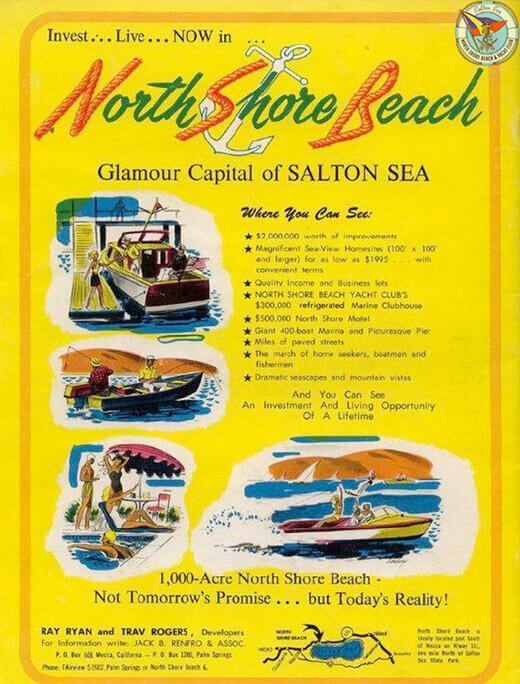
Image: Salton Sea History Museum.
Thousands of fish were released into the newly formed sea, becoming a fishermen’s paradise. Multi-million dollar marinas and yacht clubs sprung up on the shores, golf courses claimed scenic sea views, hotels were constructed and homes were built. Over half a million tourists flocked to the area annually, not to mention the likes of Frank Sinatra, Jerry Lewis, and the Beach Boys. Through the 1950s and ’60s, Salton Sea was the place to see and be seen.

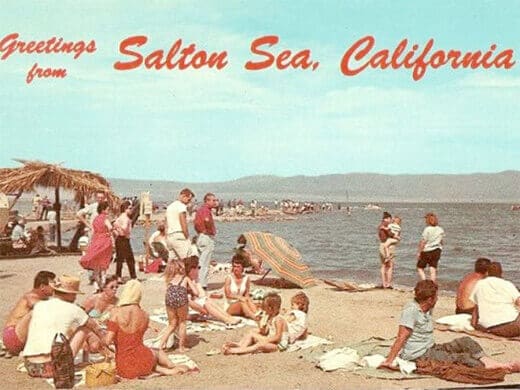
But as a landlocked lake, the lack of outflow meant water could only be lost through evaporation during the valley’s severe summers (temperatures of 120°F and up are not unheard of). Agricultural runoff from surrounding farms filled the Salton Sea with pesticides and fertilizers. What began as a body of fresh water gradually turned into a salty sludge as the ecosystem was unable to sustain itself.
Build-up of minerals made the lake too salty for most fish to survive, and botulism killed off many of the migratory birds that depended on the Salton Sea for habitat. Ever-increasing salinity and algae blooms created an environment too hostile to support most marine life.
By the 1970s, all but the staunchest residents and developers fled the area. Gone were the glory days of boat races and water-skiing. What were once thriving resort towns became dusty ghost towns.
Today, the only signs of life along the Salton Sea are the date palm farms that fringe the shores. (The valley is the primary date-growing region in the United States, supplying nearly 95 percent of the nation’s dates.)
A drive down the eastern shore of the lake on Highway 111 seemed idyllic at first. The sun was shining, the air was calm. The lake looked blue from a distance and its shores a sandy white.
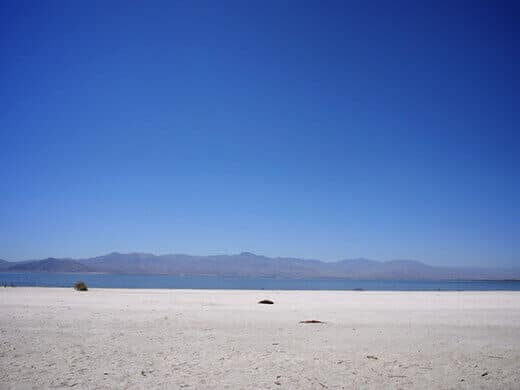
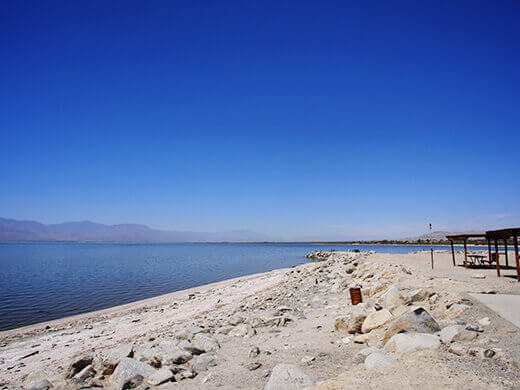
But as soon as I stepped out of the car, the fetid smell of fish immediately smacked me in the face. Dead, rotting fish, left to scorch in the sun.
I walked down to the beach and what I originally thought was white sand were actually the decomposing, sea-worn skeletons of thousands of fish crunching under my feet. More fish carcasses in various stages of decay lined the shore as far as the eye could see.

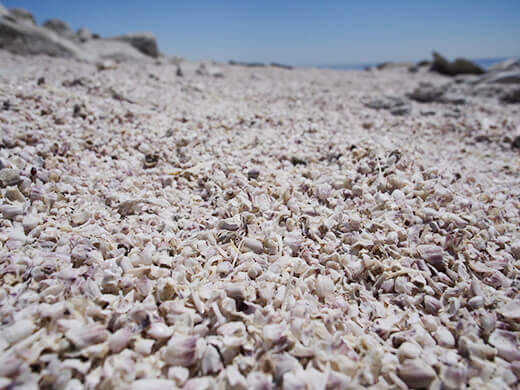

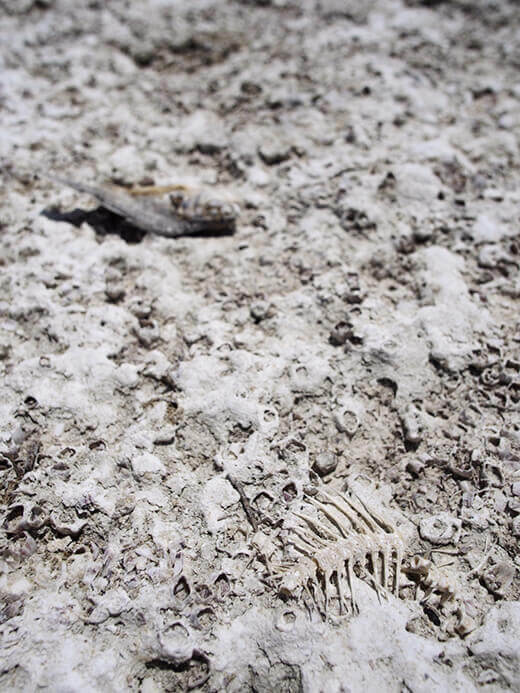
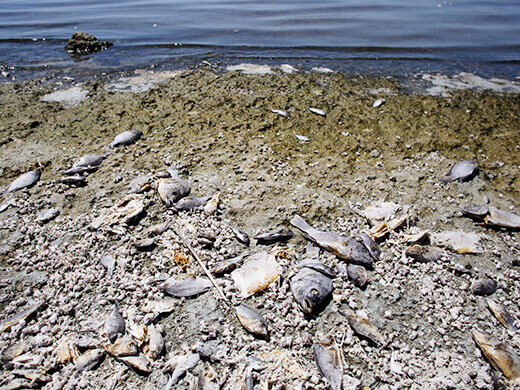
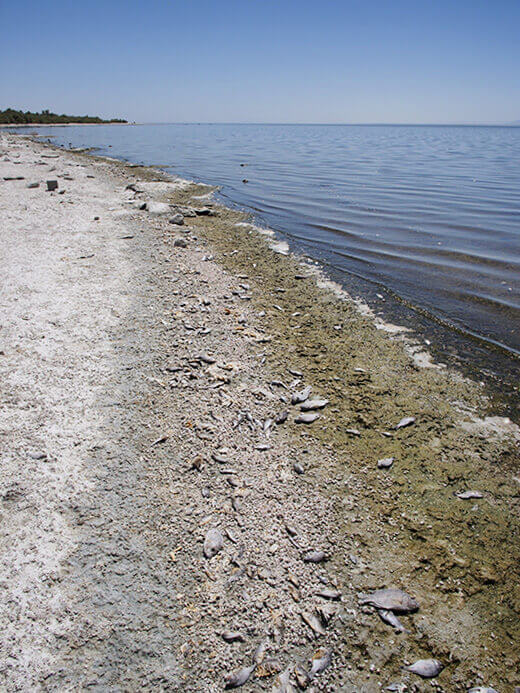
The whole scene was unsettling and somewhat post-apocalyptic, which is how many people refer to the Salton Sea. I half expected Milla Jovovich to emerge from the heat-warped sea in lace-up combat boots, shooting salt-crusted zombies in the head.
Further down the lake, we stopped at the town of Bombay Beach, the subject of many a grief documentary and one of the most famously depressing places on earth. A wooden sign and a lone palm tree greeted visitors, which at this point are curious passersby like us, local history buffs, and documentarians.

Bombay Beach still exists as a town, boasting a church, a market and a restaurant (and 295 residents, according to the 2010 census), but the blocks of derelict double-wides and boarded-up shacks are far from the fancy resort destination it once was. Residents got around in electric golf carts, as the nearest gas station is 20 miles away.
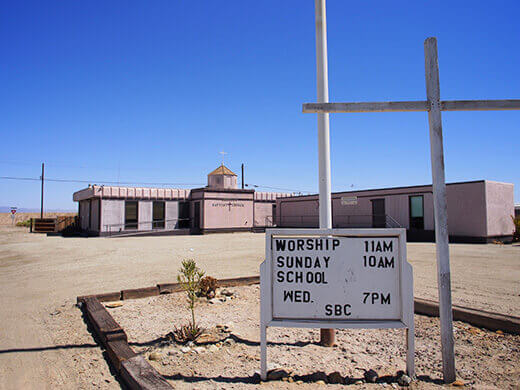
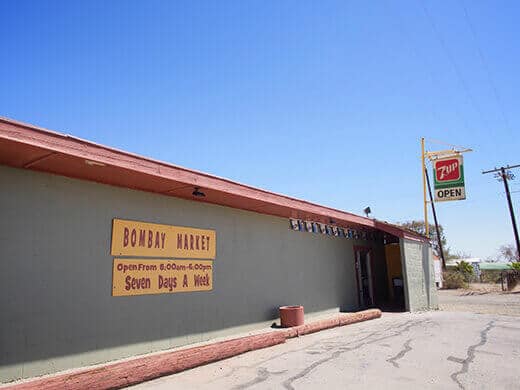
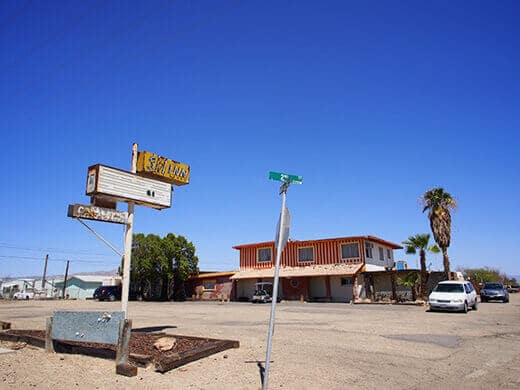
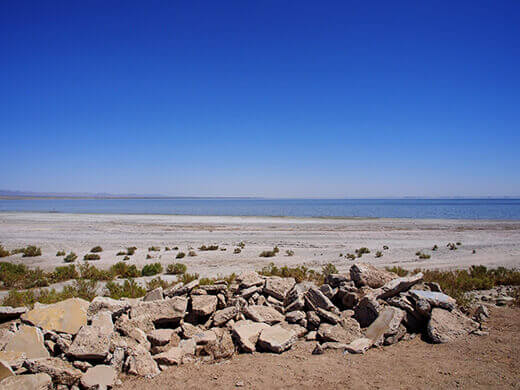

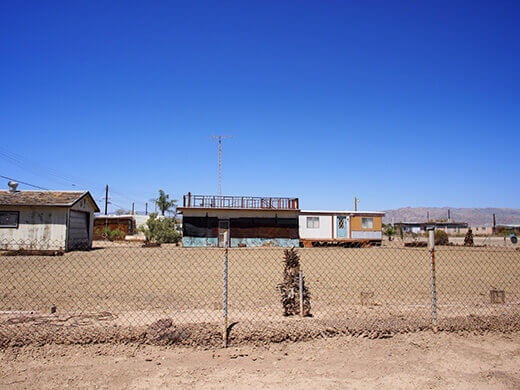


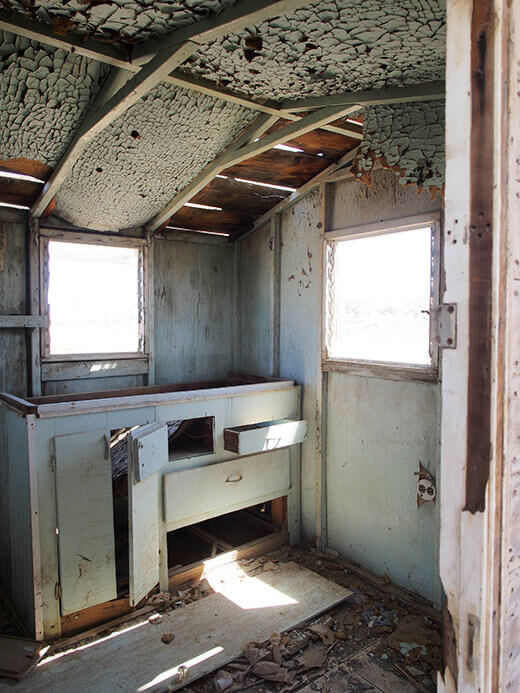
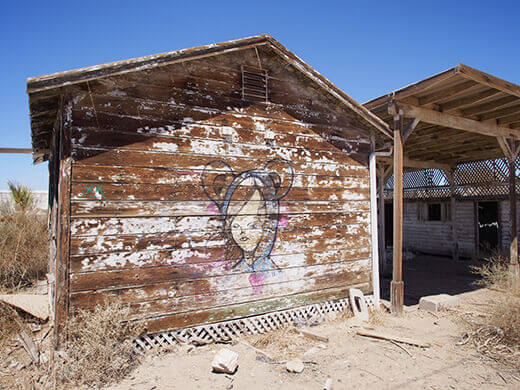

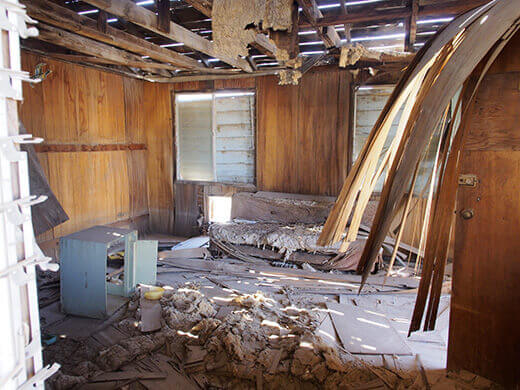
Many of the homes were abandoned but some were actually lived in. Every once in a while, you would come across a little gem like this pristine Airstream tucked away next to a mobile home.
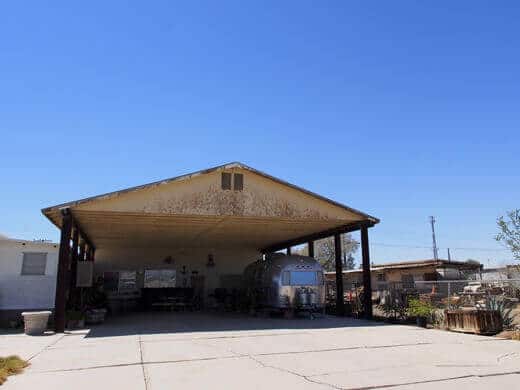
Poking my head into a few of the structures, it seemed like whoever used to live in them had left in a hurry. Furniture, clothes, and canned goods were strewn about like a hurricane had ripped through the place.

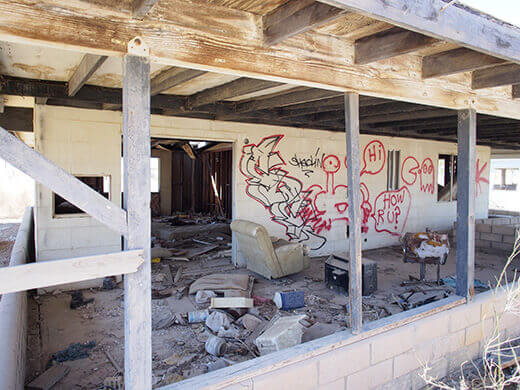
And it actually did. In 1977, Hurricane Doreen made landfall in the region, ravaging what was left on the lake’s shoreline. The lake burst its banks and flooded the town, leaving many structures half buried and corroded in salty mud, in what was once the town’s most coveted stretch of real estate.
Officials built a dike around half the town to protect the homes still remaining. The lower part of town is now known as the ruins of Bombay Beach, and draws a fair share of tourists. As one of the lowest settlements in altitude in North America, its dilapidated structures slowly sink into the mud with every rise and fall of the Salton Sea.
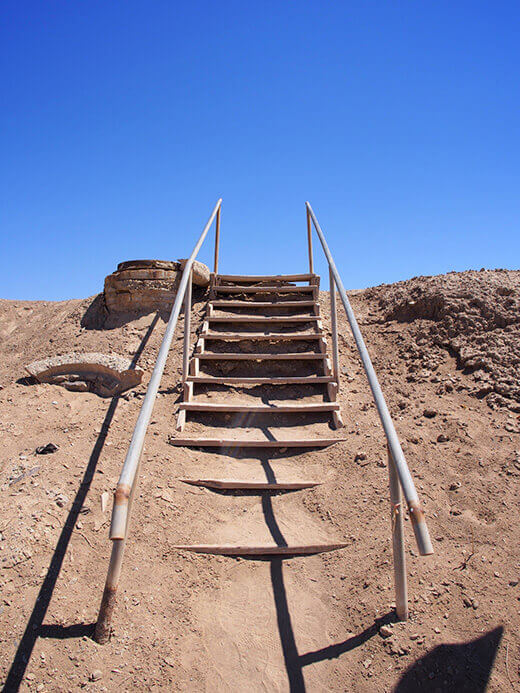

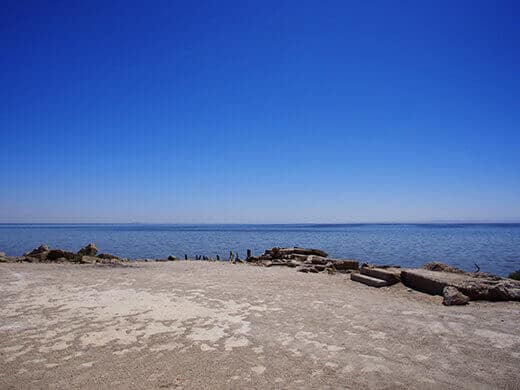
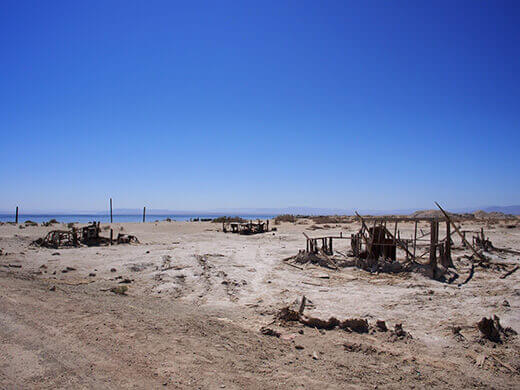

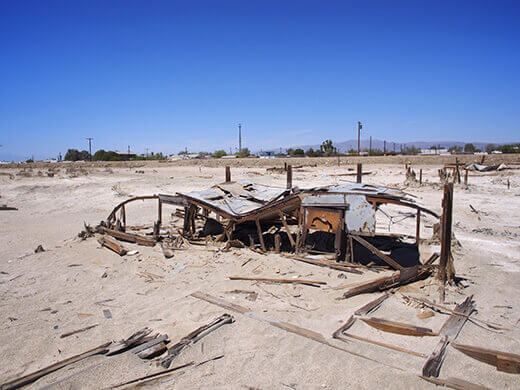
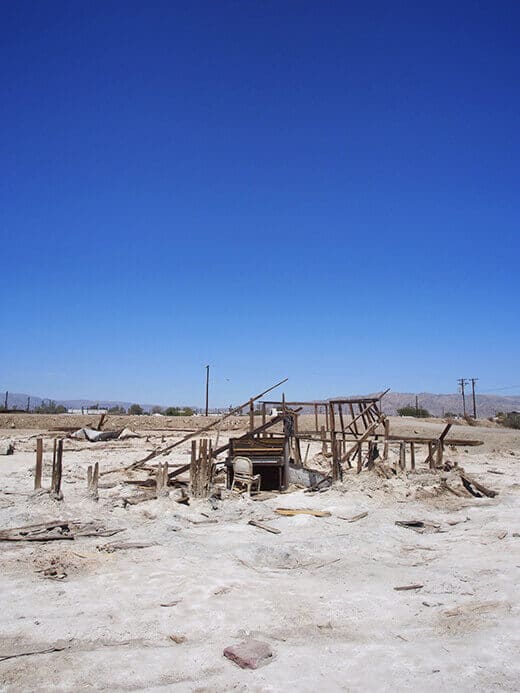
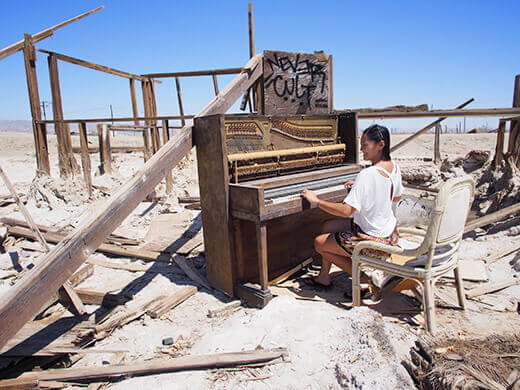
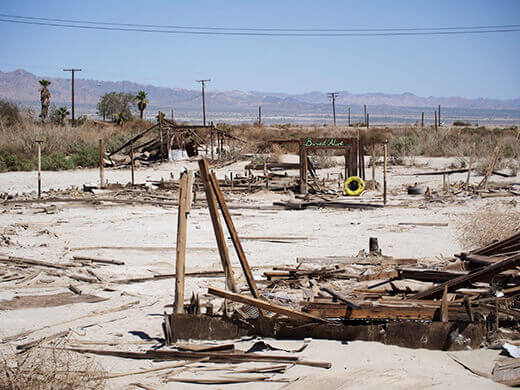
These days, the Salton Sea is saltier than the Pacific (increasing by about 1 percent each year) and sits at 226 feet below sea level (that’s a couple hundred feet lower than New Orleans, and just a touch above the lowest point in Death Valley). It’s fed by runoff from farms in the Imperial and Coachella Valleys, along with inflows from the Alamo, New, and Whitewater Rivers.
Even so, the Salton Sea shrinks at a rate of 7 inches per year (and maybe more, if the drought in California continues). Worse still, a water transfer agreement (known as the 2003 Quantification Settlement Agreement) takes effect in 2018 by stopping the flow of water from surrounding agricultural fields (and diverting it for urban use). Without this agricultural water, the Salton Sea could turn into the Salton Dustbowl within a few decades — just in time for Travertine Point, the controversial master-planned development on the northwestern tip of the lake, to be finished.
Another shot at the Riviera of the West? Only time will tell.


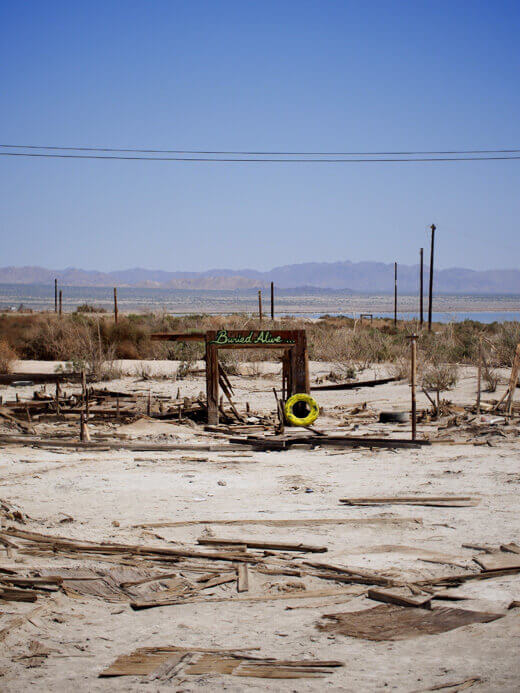













As the largest natural (pre flood) lake in California the economic, ecological impact from the loss of the Salton Sea are of epic proportions. Its unique characteristics often leave its visitors with a sense of disappointment
and a general impression of a place not worth salvaging. However, many fear that if the current course of deterioration is not corrected we will have another Owens Lake scenario for the entire Coachella / Imperial Valley region. Destroying agriculture, tourism in Palm Springs and creating toxic air quality for everyone residing in its neighboring cities.
I am and have been a frequent visitor of the lake since the 80’s. A time when you wouldn’t think twice about swimming in the lake and could leave with a cooler filled with Tilapia after a days worth of fishing. Those days have gone yet still some of the most peaceful memories in my life are of days spent on the shores of Mecca beach while watching the sun slowly fade behind the San Jacinto mountains. I love the Salton Sea, despite its decline and often observed negative aspects its still represents a place of beauty for me. IT IS an important ecological sanctuary that should not be neglected.
Decomposing skeletons of thousands of fish define its shores. The Post-Apocalyptic World of the Salton Sea http://t.co/EahnPfFLOp #travel
And I see a short story coming out of this trip! My dad has been begging me to write a zombie story… Maybe I need to do a “research trip”.
Yeah.
Research.
I’m sure you will find plenty of inspiration out there! Might need to turn it into a novel for NaNoWriMo. 😉
This saline lake was created by an engineering mishap in 1905. The Post-Apocalyptic World of the Salton Sea http://t.co/GthOS8PvVS #travel
California’s largest lake is also one of the lowest points on earth. The Post-Apocalyptic World of the Salton Sea http://t.co/HnMrHkx8cj
Eerie, fascinating, and controversial.The Post-Apocalyptic World of the Salton Sea http://t.co/THaNxnktA7 #california #travel
Wow, this is so sad… but really interesting and I’m sure incredibly neat to visit. I am so intrigued and would love to see this! The new development kind of seems like a terrible idea… but California loves to spend money!
I recommend visiting any time it’s NOT summer… When I was there, the temps reached 113! But it also gave everything a sort of sci-fi heat-warped look that was apropos. I’d actually love to go back, visit the date farms, and learn more about the bird ecology there. The lake is an important stopover during migrations and is home to over 400 species of birds!
Howdy Betty, my ex girlfriend lives down at the southeast part of Salton Sea at a place where folks can live free. There are entire homeless or semi-homeless families down there. It’s her choice. Many of them go by nick-names and are very secretive. Last I heard, many of them live off their disability or retirement checks that aren’t big enough to pay rent. One feller makes enough money by filling a tank on the back of his old pickup truck with fresh tap water miles away and then selling it by the 5 gallon jug. Some do store or garbage runs for a fee. They seem to have their own economy. Some are northerners who go there during winter to live very cheaply, and then go back home during the hot parts of the year. Others simply move to the coast somewhere in their old vans when it gets hot, and the hardy year rounders stick it out in the heat, or have an old swamp cooler run by generator. They are all a hard attitude kind of folk. Got to be I guess.
I visited Slab City (the community you’re referring to) on my Salton Sea drive. That, too, is a fascinating place to explore. I have a post going up about it shortly. 🙂
Yes, that’s the name of the place. I was trying to think of it.
A place that every #California history buff should visit at least once. The Post-Apocalyptic World of the Salton Sea http://t.co/26NGAFUtCs
Betty, this is fascinating. I had never heard the Salton Sea story until now. My husband’s a professional pianist, and we had to laugh at the piano photo! They always seem to be left behind!
It was in surprisingly good shape compared to the rest of the relics out there!
RT @theGardenBetty: Blogged on Garden Betty: The Post-Apocalyptic World of the Salton Sea http://t.co/vplVQphnor
Blogged on Garden Betty: The Post-Apocalyptic World of the Salton Sea http://t.co/vplVQphnor